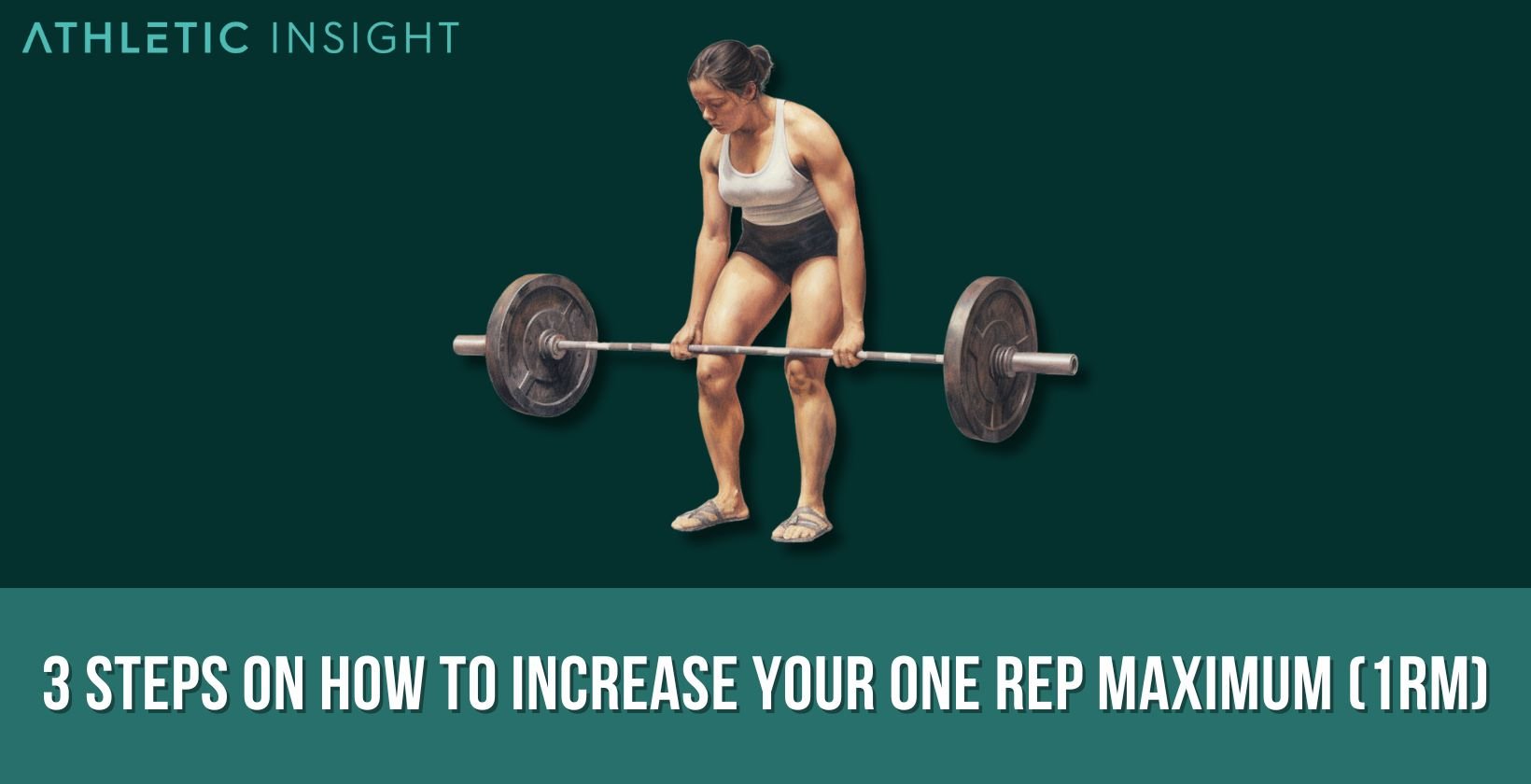In the realm of fitness and strength training, the one rep max (1RM) serves as a paramount element, guiding trainers and trainees alike. For novices in the fitness arena, the term 1RM refers to the maximum weight that an individual can lift for one repetition of a given exercise.
The importance of the 1RM metric is that it provides a solid basis for constructing a strength training plan. It is used to gauge progress, identify strengths and weaknesses, and tailor workouts to an individual’s unique capabilities.
- Look for an Accurate Training Max
- Push the Limits for Strength
- Use Walkouts, Holds and Ranges of Motion Exercises
1. Look for an Accurate Training Max
The initial step towards increasing your 1RM is identifying an accurate training max. This refers to the highest weight you can lift with good form for a specific exercise. It’s imperative to note that an accurate training max may not necessarily be the absolute maximum weight you can lift, but rather it pertains to the weight you can lift while maintaining proper technique.
The importance of an accurate training max cannot be overstated. It allows for safe and effective training by avoiding the risk of injury that can come from lifting weights that are too heavy for one’s current abilities. By pushing your limits in a controlled manner and gradually increasing your training max, you can safely enhance your 1RM.
2. Push the Limits for Strength
Once an accurate training max has been established, the next step is to push the limits of strength. This entails progressively challenging the body with heavier loads or more complex exercises. The principle behind this step is the concept of progressive overload, a cornerstone in the strength training paradigm.
Progressive overload suggests that for muscles to grow and strength to increase, the body must be regularly and incrementally challenged beyond its current capabilities. This concept is not only crucial for increasing your 1RM, but it also aids in developing muscular endurance and enhancing overall fitness levels. It’s important to progress wisely, ensuring you maintain good form and avoid overtraining, which could lead to injury.
3. Use Walkouts, Holds and Ranges of Motion Exercises
The final step in the triad of 1RM enhancement is the integration of walkouts, holds, and ranges of motion exercises into your training regimen. Walkouts are used to accustom the body to handling heavy loads, while holds help increase muscular endurance. Meanwhile, employing a full range of motion in exercises ensures that every part of the muscle is worked.
The merits of these techniques are plentiful. They augment muscle activation, stimulate strength gain, and facilitate better overall performance. When performed correctly, these exercises can lead to significant increases in 1RM. It’s vital to approach these exercises with caution, ensuring proper form and technique to prevent injuries.
What is 1RM?
In fitness jargon, 1RM (one rep max) refers to the maximal amount of weight that a person can lift for one repetition of an exercise. It is the zenith of one’s strength capacity for a specific movement. The 1RM is an indispensable metric in strength training as it helps design individualized workout programs.

What Does 1RM Do?
The 1RM serves a twofold purpose. Firstly, it provides a snapshot of an individual’s maximal strength level for a specific exercise, providing a quantifiable method to monitor progression. Secondly, it informs the adjustment of workout intensities, enabling the creation of customized training plans. The principles of 1RM revolve around the concept of specificity – training in a manner that aligns with one’s unique strength and fitness goals.
What is the Purpose of 1RM?
The 1RM is instrumental in constructing effective strength training regimens. Its utility lies in its ability to provide an accurate representation of an individual’s maximum strength, thus allowing for the tailoring of exercise intensities to stimulate optimal muscle growth and strength increase. Additionally, by regularly testing and updating your 1RM, you can keep track of your progress, stay motivated, and ensure your training continues to challenge you.
How to Check your 1 Rep Max Progress?
Tracking progress in 1RM is achieved through periodic testing. After a cycle of training (typically 4-6 weeks), perform a 1RM test for each exercise in your program. Record these results and compare them to previous tests to evaluate progress. Note that it’s crucial to ensure adequate rest prior to testing and maintain proper form during each lift to get accurate results and prevent injury.
What is the Role of Nutrition in Increasing your 1 Rep Max?
Nutrition plays a vital role in the pursuit of a higher 1RM. Consuming a balanced diet rich in protein, carbohydrates, and healthy fats provides the energy required for intense workouts and aids in recovery and muscle growth post-exercise. Adequate hydration and micronutrient intake also contribute to overall performance, recovery, and health. A carefully planned diet can be the difference between reaching a new 1RM or stagnating in your progress.
How can you prevent injury while trying to increase your 1 rep max?
Preventing injury when striving to increase your 1RM involves several crucial measures. First, always perform lifts with proper form, even when testing your 1RM. Lifting heavy weights improperly can quickly lead to injury. For this reason, it is recommended to use an exercise utilizing dumbbells, like the dumbbell bench press, to prevent injuries.

Second, to prevent injury during the 1RM, ensure adequate warm-ups before training and cool-downs after, to prepare your body for the intense effort and aid in recovery. Finally, listen to your body. If a weight feels too heavy or an exercise causes pain, it’s better to rest or reduce the weight than to risk injury.
What are some common mistakes to avoid when trying to increase your 1 rep max?
Some common missteps when striving to increase your 1RM include neglecting proper form, overtraining, insufficient rest and recovery, and not tracking progress. Avoiding these pitfalls will increase the likelihood of reaching your 1RM goals.
What is the importance of proper form in maximizing your 1 rep max?
The importance of proper form in increasing your 1RM cannot be understated. Proper form ensures optimal muscle activation, which leads to greater strength gains. Additionally, it significantly reduces the risk of injury that could hinder progress.
How can you use progressive overload to increase your 1 rep max?
A progressive overload is the practice of gradually increasing the amount of stress placed upon the body during exercise. In the context of increasing your 1RM, it involves systematically increasing the weight lifted, the volume of exercise, or the intensity of workouts over time. This encourages adaptation and muscle growth, leading to increased strength and a higher 1RM.
How often should you attempt a 1 rep max lift and how can you properly prepare for it?
Attempting a 1 rep max lift should not be a frequent part of your routine due to the high intensity and potential risk of injury. Generally, it’s advisable to test your 1RM every 4-6 weeks to allow adequate time for adaptation and improvement. Proper preparation involves regular and consistent training based on progressive overload, adequate nutrition, and plenty of rest and recovery.
What are some effective warm-up exercises to improve your 1 rep max?
Dynamic warm-ups are key to preparing your body for a heavy 1RM lift. Some effective exercises include leg swings, arm circles, lunges, jumping jacks, and light cardio. These warm-up exercises increase heart rate, improve joint mobility, and prepare your muscles for the intense effort ahead.
What are the Advantages of Doing 1RM?
The benefits of integrating 1RM into a workout routine extend beyond the realm of mere strength enhancement. Regularly performing 1RM tests can result in better neuromuscular coordination, improved motor unit recruitment, and the development of lean muscle mass. Moreover, it fosters a deeper understanding of one’s physical abilities, enabling the formulation of realistic fitness goals and bespoke training regimens.

What are the Dangers of Doing 1RM?
While the allure of 1RM testing is undeniable, it’s essential to recognize the inherent risks. These include acute injuries such as muscle strains or ligament tears resulting from lifting excessive weights, improper form or inadequate warm-up. Moreover, chronic issues such as joint wear and tear or muscular imbalances may also develop from consistent maximum effort lifts. Therefore, executing 1RM tests judiciously, with appropriate safeguards, is of paramount importance.
What Will Happen if Resistance is used while Doing 1RM?
Focusing on resistance or increasing the time under tension while executing a 1RM lift can result in heightened muscle activation, thereby stimulating hypertrophy. However, it could also lead to form degradation due to fatigue, potentially risking injury. Therefore, if implementing resistance training with 1RM, it’s critical to ensure form and safety precautions are meticulously adhered to.
Can a Beginner Do a 1RM?
Yes, a beginner can perform a 1RM lift. However, it is not typically recommended due to the lack of foundational strength and proficiency in lifting techniques that most novices exhibit. Instead, beginners are better served by focusing on mastering form, developing consistent exercise habits, and gradually increasing weight.
Do Fitness Coaches Recommend 1RM for Training?
Yes, fitness coaches often utilize 1RM in training, especially when working with intermediate to advanced trainees. It allows for personalized programming, goal setting, and tracking progress. However, coaches always emphasize the importance of safety, proper form, and appropriate progression, knowing that an improperly executed 1RM can lead to injury. As such, the incorporation of 1RM is typically carefully considered and planned.



